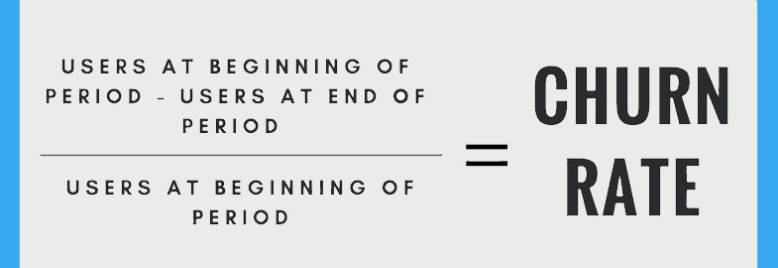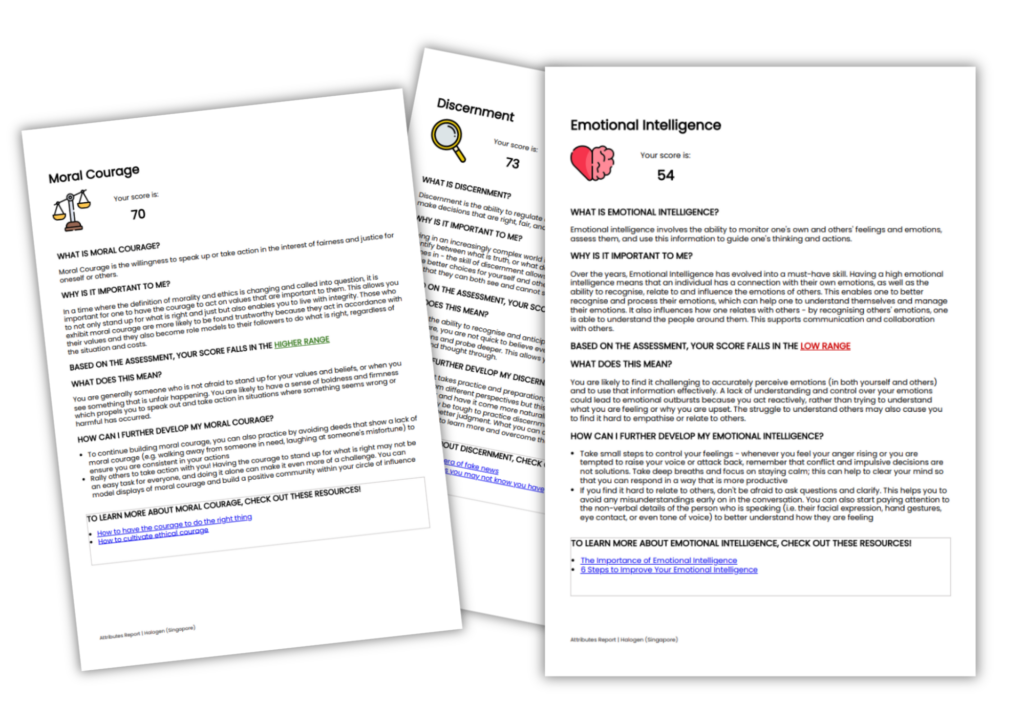The fact that you don’t have time to go from one customer to another and personally check how happy they are doesn’t mean nobody should pay attention to their opinions.
Moreover, it should be one of the most important tasks in your daily business routine, having in mind that 73% of consumers state that positive experiences increase their loyalty to a certain brand. At the same time, around 86% of millennials get influenced by negative reviews of your services online and end up approaching your competitors.
And we bet you don’t want to:
- Either create a bad experience that ruins your customers’ day
- Or lose customers to your competitors
So, apparently, not only are you supposed to measure customer experience over and over again, but you should also do it thoroughly. Doing so helps you to obtain a real image of your customers’ satisfaction level and work on the improvement of critical aspects in their experience.
Now, let’s see what you should do to measure customer experience the right way, what CX metrics you may want to rely on, and how to get the most out of them.
Measuring Customer Experience Success: Must-Use CX Metrics
To even think about measuring customer experience success meaningfully, you should first learn about the most important CX metrics. Only when you master their calculation and interpretation, you’ll be able to use their results in a good way.
So, without further ado, let’s proceed to explain the most popular CX metrics that numerous successful businesses rely on. Maybe some of them are precisely what your business needs.
1. Net Promoter Score (NPS)
Net Promoter Score is a convenient survey scoring and CX metric that lets you analyze your customer experience success pretty quickly. It helps you get to know how interested your customers are in spreading the word about your products or services with their families, friends, and colleagues.
The measurement process:
- Send your customers a scale-based survey (1 to 10) asking how likely they are to recommend your brand to other people.
- Depending on their answers, divide them into three groups based on their feedback:
- Loyal and satisfied customers (also known as Promoters) are those who selected a 9 or 10.
- Indifferent customers (also known as Passives) are those who selected a 7 or 8.
- Unhappy customers (also known as Detractors) are those who selected a 6 or less.
- Subtract the percentage of Detractors from the percentage of Promoters.
The results you’ll obtain may range from -100 to 100. While calculating and analyzing data, consider that the higher the score is, the more likely your customers are to spread the word about your brand.
2. Customer Effort Score (CES)
Simply put, CES quantifies the effort your customers have to make to perform a certain action. Practically, it shows how difficult it was for them to get what they desired.
The measurement process:
- Send your customers a survey that includes a critical statement related to their experience that you want them to evaluate, such as
It was easy for me to get in touch with a support operator.
This statement should be followed by a scale from 1 to 7 (where 1 represents total disagreement while 7 means that they completely agree).
- Based on the survey report, calculate your CES by dividing the mark sum by the number of responses.
3. Customer Satisfaction (CSAT)
CSAT is a metric that helps you figure out an average customers’ reaction to specific processes they’ve been through with your business. It is very important to measure customer satisfaction to provide the best experience to your customers. It can refer to their satisfaction with any process related to them getting what they want, including your customer support, product delivery, service activation, returning product, etc.
The measurement process:
- Send your customers a scale based survey scoring asking how happy they are with your product, offering them marks from 1 to 5 (1 meaning not satisfied at all, 5 meaning absolutely satisfied).
- Use the collected data to divide the number of satisfied customers by the number of customers who completed the survey. Turn it into a percentage by multiplying the obtained number by 100.
This way, you’re practically determining your average customer experience. So, accordingly, it’s in your best interest to keep this number as high as possible.
4. First Response and Average Handling Time
Like their names say, these metrics track how much time you need to reply to your customers for the first time and how much time on average you need to solve their issues or answer their questions.
The measurement processes:
To measure First Response Time, all you need to do is keep track of the time that passes from the moment you receive a request until the moment one of your agents responds to it. And if you want, you can calculate your Average First Response Time by summing all FRTs that you’ve kept track of and divide this sum by the number of monitored sessions.
To measure Average Handling Time, first, you have to sum your total talk time, total hold time, and total after-call work time. Then, divide this sum by the number of handled calls.
5. Churn Rate
Churn Rate is also one of the useful customer experience measurement metrics as it helps you figure out how many of them give up on your brand after a single purchase.
The measurement process:
- Decide which period you are going to use to calculate your churn rate.
- Identify the total number of customers that you lost in that period.
- Divide this number by the number of active customers in that period.
The higher this rate is, the more likely it is that your business doesn’t communicate the right way with your customers. Accordingly, you have to put some extra work in discovering their pain points and making them stay loyal instead of watching them leave.
How to measure customer experience: Best practices
As you can see, to make sure to measure your customer experience the right way, you should get familiar with the essential metrics. However, there are some more things that you should pay attention to, as they make a difference between unreliable and remarkable practices. Read on and check out the following five incredibly useful tips that will help you establish a quality and purposeful measuring practice.
- Combine different metrics to keep track of all the phases in your customer’s journey
Each of the metrics we’ve mentioned in the previous section has an important role in measuring customer experience success – as you can see, they all provide valuable data for different aspects of your relationship with customers. However, if you only rely on one of them, you won’t get to know much about your clients’ overall satisfaction level.For example, they may be disappointed in your product but satisfied with your support service. And if you don’t use the metrics that are necessary to evaluate both of these aspects, you’ll only get partial feedback that won’t help you understand your customers completely.
- Wisely choose the timing and the channel for your communication with customers
Customers’ feedback is an essential part of the customer experience measurement. So, accordingly, you should pay a lot of attention to the way of asking them for that feedback.In the first place, you should be aware that they won’t be willing to spend a lot of time answering your questions. So, make sure that you keep your survey clear, short, and precise.
Secondly, think thoroughly about the channel that you are going to use to send your survey to them. If your customers prefer using live chat software to reach out to you for support, then don’t try to collect their feedback via a call center. Instead, adapt your way of getting feedback through the live chat software.
The best live chat software allows you to add a post-chat form that helps you collect customer feedback the moment a chat comes to an end.
Last but not least, don’t be annoying. While you may want to get their feedback on each of your interactions the moment they occur, make sure to ask for it only when it’s necessary. In other words, don’t make them lose patience by surveying them after every step they make. To get the crucial reactions in detail, collect impressions on the critical points only, and avoid piling up a bunch of forced and generic feedback that won’t be too helpful.
- Focus on surveying the customers that bring the highest value to your business
Instead of collecting feedback from every visitor on your website, focus on the potential buyers and loyal customers. And your essential customers are the ones who purchase your products or services at an increased frequency, while also spending more money when compared to an average customer.
Accordingly, those who spend the most and keep coming back to you should be the ones to tell you how well your business performs in terms of customer satisfaction. It’s highly important for your business’ cost-efficiency that you don’t invest a large amount of your budget on pleasing those whose contribution to your business growth is not so significant. For this, you can send them feedback forms via follow-up emails.
- Measure customer experience consistently and continuously
To be able to use your customer experience measurement for a specific purpose, you should have in mind two important facts.
The first essential fact is that you have to keep monitoring your selected CX metrics in the long run if you want them to help you improve customers’ satisfaction and business performance. And this is owed to the fact that only continuous measurements can provide the information on the trends in different metrics.
The second fact you should remember is that you can’t just keep changing your CX metrics over and over again and expect that you’ll be able to monitor your progress. Moreover, to be able to contrast your customer experience success for different periods, you have to obtain the values of the same metrics for those periods. (You can’t get a meaningful interpretation of your CX if you compare your CSAT from December 2019 and NPS from January 2020)
- Define your priority customer experience measurement metrics
Not all the customer experience measurement metrics have the same value for different businesses. Your preferred CX metrics will depend on:• the size of your business,
• your business industry,
• the goals that you want to achieve using the results provided by those measurements.So, instead of trying to measure every aspect of customer satisfaction that you’ve ever heard of, focus on the metrics that provide useful information for your business. And if you’re not sure what metrics are the right ones for your business, then think about those that will help you measure and improve the aspects that your customers find important in their relationship with your business. This way, you’ll be sure that you’re dealing with their pain points and increasing their satisfaction for real.
Advanced CX measurement: Use customer experience scorecard
If you want to take your customer experience measurement to a higher, more thorough, and precise level, you should consider using the customer experience scorecard. Not only will it help you keep all your CX metrics in one place, but it will also link each of them with the other ones to provide a meaningful measurement system that will track your customers’ impressions through their entire journey.
Practically, what you’re supposed to do to build a customer experience scorecard is to:
- identify the critical moments of the customer journey that you should be evaluating,
- define the lead and lag indicators for each of those critical moments,
- define the goals for all the metrics that you use to measure those critical moments.
So, accordingly, your customer experience scorecard should consist of three important aspects of your customer experience measurement:
- Your objectives presented both descriptively and quantitatively
- An example of a descriptive presentation: increased customer retention
- An example of quantitative presentation: retention rate higher than 60%
- The aspects that you want to measure, which are supposed to be quantifiable
- retention rate, churn rate, bounce rate, etc.
- the essential key performance indicators whose analysis will help you improve your performance and achieve your goals
- For example the number of repeat visitors, the number of purchases made by the same customer, etc.
- Your objectives presented both descriptively and quantitatively
Summing up: Get the most out of customer experience measurement
Having in mind that there’s a diversity of CX metrics that businesses can use to track their customers’ satisfaction, it seems like it’s never been easier for them to discover their clients’ pain points. Accordingly, they get a great possibility of significantly improving business performance by just listening to their customers’ pulse and introducing relevant changes.
However, measuring customer experience is not about randomly selecting tools and metrics, and having confusing data showers from time to time. Rather than that, it’s about selecting the tools and metrics that really help you understand your relationship with your customers and being able to understand the obtained data. Besides, it’s about monitoring those metrics consistently and working on your brand to keep them at an optimal level.
Now, apart from combining and monitoring the right CX metrics based on the proven practices, you may also want to create your customer experience scorecard to make sure to measure customer experience thoroughly and reliably.
The system of metrics designed as a scorecard will not only help you understand each of the moments that are critical for your customers’ satisfaction, but it will also help you follow their entire journey in a precisely quantified and reliable manner. What’s most important, it will make it possible for you to contrast your goals and objectives with your real KPIs and current customers’ satisfaction level, helping you eliminate the gaps between them more efficiently.







